12/03/2023 – I was taking pictures of this Redhawk 4″ Ruger Redhawk, and I got to wondering who specifically has inputs into the final timeless appearance of a firearm. I suppose it could be the lead designer, or generically a design team, but someone has to commit the form as part of the overall design.
Who decided to drop the line of the barrel rib from the frame, run it the length of the barrel, then bring it up to frame height at an angle that flowed into the face angle of the front sight. The front of the underlug forms an opposite angle to the front sight face.
There is a good deal of artful, if not functional, symmetry. Based on sight height, even at frame level, the rib would be out of the sight picture and the barrel shroud’s longitudinal striations would cut glare. Yes, it does look nice and the striations are functional design element.
The change to a two piece barrel shroud / barrel design improved the Redhawks accuracy, solved the problem of out of vertical front sights resulting from setting barrel torque, and simplified precise assembly of the barrel to frame… labor saving. Short barrel version of the assembly pictured left.
Topside… you may have to click on the image below and look at the high resolution version. The front sight insert is only in the face of the sight where they serve a purpose, with horizontal striations in black on either side. Usually inserts are pressed or molded in and run from side to side of the front sight.
The rear sight guard, the hump back at the rear of the top strap, leads with the same, but opposite angle as the rib leading up to the front sight. Purely aesthetics. If you look at the high resolution version of this image, you’ll see a slight cross hatch on the shroud where it meets the frame.
Ruger does a really good job polishing their stainless firearms, a luster rather than a shine and they intentionally break all of the edges to improve handling. The shroud cross hatch suggests the shroud is final polished after assembly, with the polisher being careful not to hit the front of the frame. Wonder why Ruger doesn’t polish the shroud before assembly? Or, perhaps they do polish before assembly, but stay away from that trailing end to avoid rounding?
Is the Redhawk 44 Mag too much of a good thing? Not really…
I’d be lying if I said I didn’t like a revolver with a square butt frame and split grips, even though the peg leg GP 100, SP 101 and Super Blackhawk frames are more flexible and practical.
The Ruger Redhawk, from inception, was intended to be a hunting revolver. Despite the false narrative of 44 Mag revolver toting movie stars, the 44 Mag has a surplus of power, which the shooter pays for with excessive recoil and muzzle blast currency.
The Redhawk is intended to see proficiency practice and one or two shots to down deer, hogs and, with some opposing perspectives, elk, moose and bear. It is not intended for concealed carry and/or fending off carjackers or forced entry into a home. That’s a job for a more compact and more controllable combination, that is light to carry, and won’t shoot through room, apartment or house walls. Not necessarily.
If it’s so special, why is it so slow?
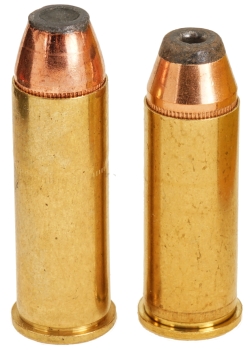 Just as 357 Magnums have their alter ego 38 Special, the 44 Magnum has the 44 Special (Pictured left, respectively); lower power, but still very much lethal.
Just as 357 Magnums have their alter ego 38 Special, the 44 Magnum has the 44 Special (Pictured left, respectively); lower power, but still very much lethal.
The 44 Special, 1907, was intended to replace the 44 Russian of 1870. Not only did the 44 Special provide greater power, it also had additional case capacity, which made it more suitable for the then new smokeless powder. Both the 44 Russian and 44 Special were introduced as black powder cartridges.
The 44 Special was factory loaded for moderate performance, which was pretty much the norm of the day. Handloaders, industry personalities like Elmer Keith, pushed the round to its potential for big game hunting applications.
Unfortunately, designed for moderate pressures, 15,500 psi MAP, many revolvers did not have the capacity to handle the developing high pressure loads, 36,000 psi. In 1955, the experimental high pressure cartridge loads culminated in the 44 Magnum, with a case length 0.122″ longer than the 44 Special. The case length increase was not necessary for capacity, but rather to prevent chamberlain in a 44 Special firearm. So while 44 Special revolver owners cannot shoot 44 Magnum ammunition, 44 Magnum revolver owners can use either. The 44 Magnum case can be trimmed to make 44 Special and 44 Russian brass.
Comparatively, compared. Table, table, table…
| Cartridge | Caliber | Bullet Weight Grains |
Chronograph MV – FPS |
KE Ft Lbs |
Recoil Ft Lbs |
| Hornady Critical Defense | 44 Special | 165 | 1025 | 385 |
4.7 |
| Underwood High Performance | 44 Magnum | 160 | 1682 | 1005 |
10.3 |
| Hornady Custom | 44 Special | 180 | 871 | 303 |
4.1 |
| Hornady Custom | 44 Magnum | 180 | 1514 | 916 |
10.5 |
| PMC Bronze | 44 Special | 180 | 845 | 285 |
3.9 |
| Federal Classic | 44 Magnum | 180 | 1462 | 855 |
9.9 |
| Federal Classic | 44 Special | 200 | 833 | 308 |
4.6 |
| Hornady Custom | 44 Magnum | 200 | 1422 | 898 |
11.3 |
| Winchester Super X | 44 Special | 240 | 674 | 242 |
4.3 |
| Federal Fusion | 44 Magnum | 240 | 1307 | 911 |
13.5 |
No, not a scientific assessment. Ammunition selections were as close as I could get to a match, using what was on hand. Certainly good enough for context. The 44 Special output is slightly less than standard pressure 45 Auto or 45 Colt in a similar set up.
Depending on the bullet type, gel block penetration is in the 14″ to 19″ range, which is comparable to the other noted cartridges, and expansion is consistently in the 3/4″ +/-. They are all capable of providing solid home and concealed carry defense with 44 Special loads.
Personally, I mostly shoot handloaded 44 Special loads and add approximately 100 fps to offset the shortish 4.2″ barrel. Any more would just take away from the nature of the cartridge and the benefits it has to offer and I have no problem substituting factory ammo.
In addition to the external velocity performance, the Ruger Redhawk is accurate for folks who can handle magnum loads, and to most everyone with 44 special loads. From a ransom rest, the Redhawk with ammo it likes can put up sub 2″ groups. Shot from the bench with support, performance with 44 special loads is about the same, maybe a tad less.
For me, 44 mag loads open up 1/4″ to 1/2″ more, which is reflective of my magnum shooting abilities. It’s a little humorous to see a review of Redhawk accuracy and notice the group size grows with increased intensity of load.
In contusion. Yes, malapropism. Don’t comment
So, the Ruger Redhawk is a wonderful firearm. Loaded with personality… and a lot of powder, it is the quintessential 44 Magnum revolver. Loaded with 44 Special, it is a range buddy and personal protector. Sound good, Joe, but I know there is more, and possible not good stuff.
Actually, minor, and nothing to do with the double duty hammer/trigger return spring. I have come to my own replacement spring rates and trigger jobs that make for a comparatively light double action trigger pull and reliable ignition.
The Redhawk is robust and, therefore, not a compact revolver and not light. The 6 round cylinder is approximately 1.782″ across and the weight is 47 oz. with a 4.2″ barrel. So it is a bit to carry on a belt and may do better in a chest holster. I am sure many will disagree as there are many, many belt holsters made for the Redhawk.
In production and popular for 44 years. I have seen pedestrian critique of the Redhawk, mostly cliche observations. Me? I’m not that good as a firearm design engineer and empirical perspectives can be absolutely wrong. I can fly a small aircraft well, but I sure as hell couldn’t tell you how to build one. I can shoot firearms, but…

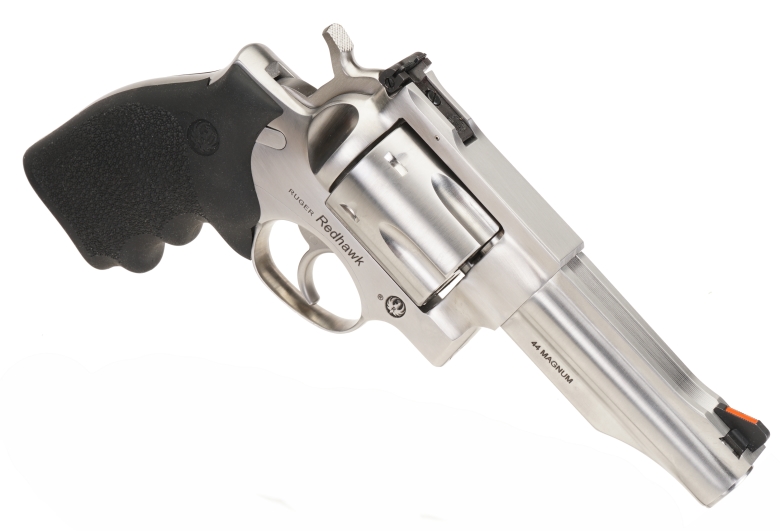
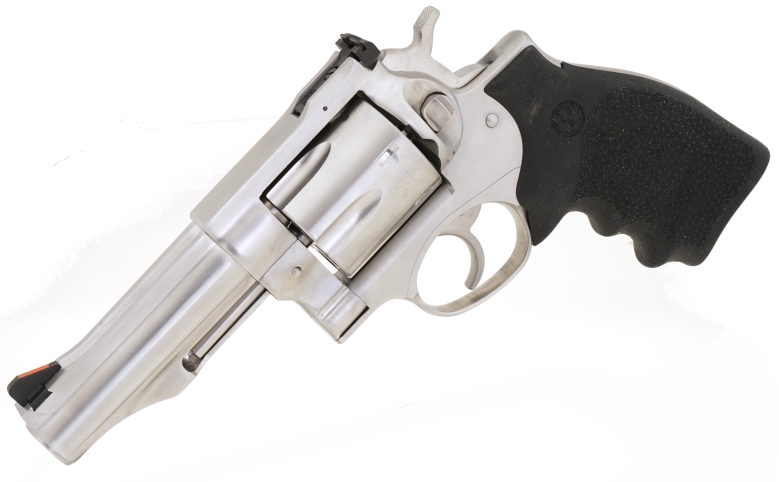
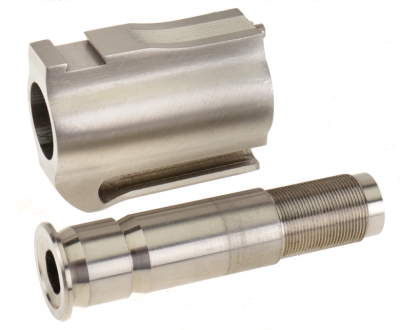


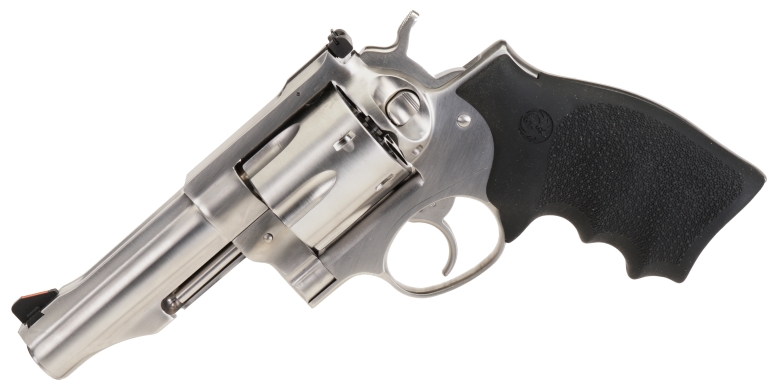
Joe, the Ruger Redhawk 4″ 44 Magnum is a tool, a hammer if you will. It will drive the biggest nails and I don’t think one can wear it out or break it. My 4″ 44 Magnum is a M29-2 that I was fortunate enough to receive from one of my State Police comrades before he passed away. When I graduated from the Academy in January 1975, I was assigned to his shift and he was carrying this M29. I, of course, had a shiny new M66. He was a handloader, so I think he was loaded with some down loaded Elmer loads. At that time, since we had to purchase our own weapons, we could carry the big S&W Magnums. I went on to carry a 6″ M57 since I’m 6’4″”. Any way the big guns did not last long and we all had to go back to M19’s or M66’s. In respect for my comrade, I qualify annually with the M29 for my retired officers qualification. I use 225 grain coated bullets over 8 grains of TrailBoss. One does not have to go down range to see the holes in the target. Bob!
A hammer is probably a good term. I have a 44 mag and 45 Colt that I shoot frequently, use for handload development and open carry in the surrounding woods at times. I am not 6’4″ so, while recoil is not a problem, belt weight it, so I usually carry a GP100 357 mag. I may still grow up some more, but at 77, chances are slim. So I’ll leave the casual 44 mag carry up to you big guys.
I like the M29. It is an… eloquent design and a good shooter. The M66 is a tough one; good shooter and built to last. Can’t believe they stopped Trail Boss. I’m down to my last 60 lbs and it ends up in most of my subsonic work.
Take care,
Joe
Joe, I’m closing in on you. I’ll be 73 in January. Like you, I spend a lot of time on my Kubota tractor on 120 acres and I currently carry a 2.75″ M69 with 2 speedloaders in a Desantis belt holster. Since I live next to a game reserve and had an 11′ alligator in my back yard last June, I feel the need to go heeled. Bob!
Bob, I don’t mind you pacing me with age. Let’s hope we don’t have a circumstance where you overtake me. 24 degrees this morning and snow. I think you have the better deal.
That’s too cold for this Southern boy!!!!!
Loved to read this article, again :-). I have great fondness for the 44 Magnum, although not quite as much as my love affair with the 357 Magnum. A Super Blackhawk with factory W-W and Remington 240 grain lead SWC loads taught me how to flinch when I was introduced to them 40+ years ago. Handloading the Ruger down and a Guns and Ammo article on how to train out a flinch (close eyes, load three rounds randomly and spin the cylinder) got me past the clenched teeth and into genuine enjoyment of the Super Blackhawk. Thanks so much for your ruminations on the 44!